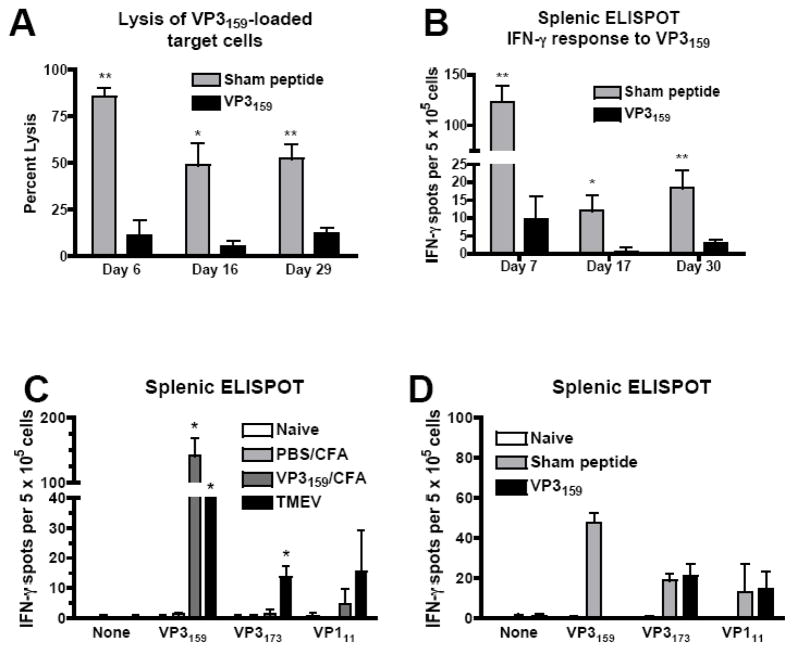Figure 1.
The immunodominant response to TMEV in SJL mice is specifically inhibited by tolerance induced by i.v. injection of soluble peptide prior to virus infection. (A, B, and D) SJL mice were injected i.v. with 200 μl of PBS containing 100 μg of VP3159–166 or sham peptide (VP2121–130) 7 days prior to i.c. infection with TMEV. (A) On days 6, 16, and 29 p.i., in vivo lysis assays were carried out to address the capacity of CD8 T cells to lyse VP3159–166-loaded target cells. ELISPOTs were performed to determine the frequency of splenic IFN-γ responses to VP3159–166 on days 7, 17, and 30 p.i. (B). For panel (C), naïve mice, mice primed with PBS/CFA, mice primed with VP3159–166/CFA, and mice infected with TMEV were assessed for their IFN-γ responses to VP3159–166 and the subdominant VP3173–181 and VP111–20 epitopes by splenic ELISPOT on day 7 p.i. Specificity of tolerance was tested by assessing responses to the three SJL TMEV epitopes at day 7 p.i. in VP3159–166 tolerized mice (D). All data are representative of at least 3 separate experiments containing 3–5 mice per group. Percent lysis or IFN-γ production is significantly greater than appropriate control: *p<0.01; **p<0.001.

